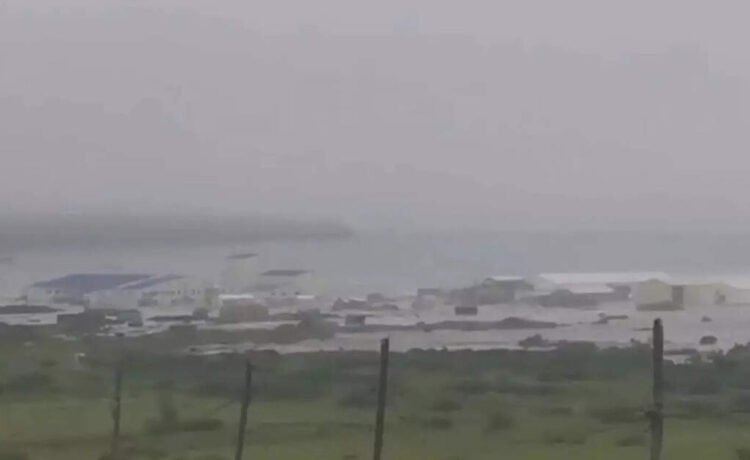The US Embassy in Tokyo has been ordered to evacuate as a precaution, while authorities in multiple countries remain on high alert.
In Japan, waves were detected in Tokachi, a region on Hokkaido’s southeastern coast, while the first wave to hit land flooded parts of Severo-Kurilsk in Russia. At least four whales were spotted unusually close to shore along Japan’s eastern coastline.
First tsunami wave hits Russia’s Kuril Islands
The undersea quake, which struck at 8:25 am local time, had its epicenter approximately 119 kilometers southeast of Petropavlovsk-Kamchatsky, a city of nearly 180,000 residents. According to the US Geological Survey (USGS), it originated at a shallow depth of 20.7 kilometers (13 miles), a profile that is known to be especially conducive to tsunami generation.
Just minutes after the quake, the first tsunami wave hit Russia’s Kuril Islands, flooding a fish processing facility and other low-lying buildings in Severo-Kurilsk, officials confirmed. Local authorities successfully evacuated residents to higher ground, and no fatalities have been reported so far.
In Petropavlovsk-Kamchatsky, buildings suffered structural damage, and widespread power and cellular outages were reported. Regional health officials stated that several people sought medical attention, including one person who sustained minor injuries after leaping from a second-story window in panic during the quake.
Hawaii, Japan, and the US West Coast brace for impact
Tsunami sirens blared across Hawaii Tuesday night as officials urged coastal residents to evacuate to higher ground or seek shelter on upper floors of sturdy buildings. The Pacific Tsunami Warning Center warned:
“Urgent action should be taken to protect lives and property.”
In Japan, tsunami waves measuring 40 centimeters (1.3 feet) were already observed in Tokachi, Hokkaido, with officials warning that much larger waves, up to 3.5 meters (12 feet), could follow. Transportation disruptions were immediate: Sendai Airport closed its runway, and ferry and train services were suspended in northern areas.
At the Fukushima Daiichi nuclear plant, officials said that 4,000 workers evacuated to higher ground as a precaution. No anomalies or safety issues have been reported at any nuclear sites.
Tsunami alerts ripple across the Pacific
Tsunami alerts and advisories have now been issued for Alaska’s Aleutian Islands, the US West Coast, British Columbia, the Philippines, New Zealand, Guam, Chile, and Ecuador.
The Oregon Department of Emergency Management warned that waves between 1 and 2 feet were expected to reach its coast around 11:40 pm local time. While not classified as a major tsunami, officials cautioned:
“Dangerous currents and strong waves may pose a risk to those near the water.”
In New Zealand, the National Emergency Management Agency urged the public to stay clear of coastal areas due to “strong and unusual currents and unpredictable surges.”
Region on edge amid ongoing aftershocks
Russia’s Geophysical Survey labeled this the strongest quake to hit Kamchatka since 1952, when a magnitude-9.0 earthquake sent deadly waves into the Hawaiian Islands. Multiple aftershocks have been recorded in the region, the most powerful measuring 6.9, and geologists warn that more could follow.
This event is another grim reminder of the seismic volatility of the Pacific Ring of Fire, where tectonic plates converge and where the majority of the world’s largest earthquakes and volcanic eruptions occur.
Authorities across affected regions continue to monitor wave patterns and aftershock activity. Officials stress that tsunami waves can arrive in multiple surges over several hours, and residents are urged to remain on high alert and strictly follow all local evacuation and safety directives.



